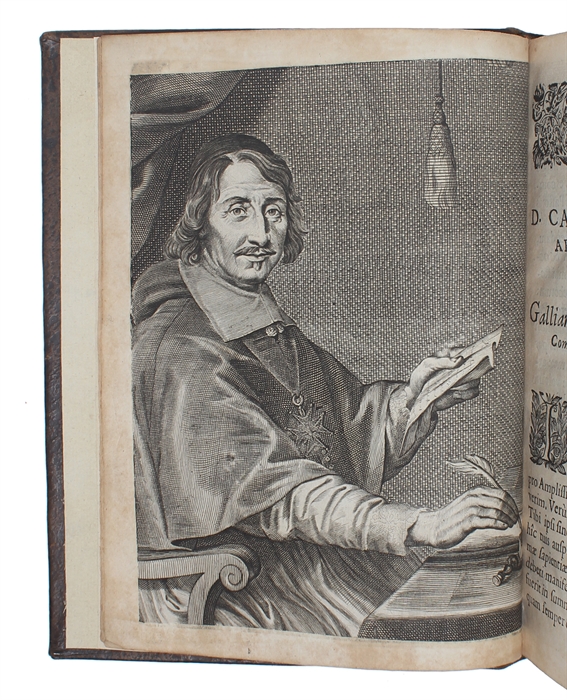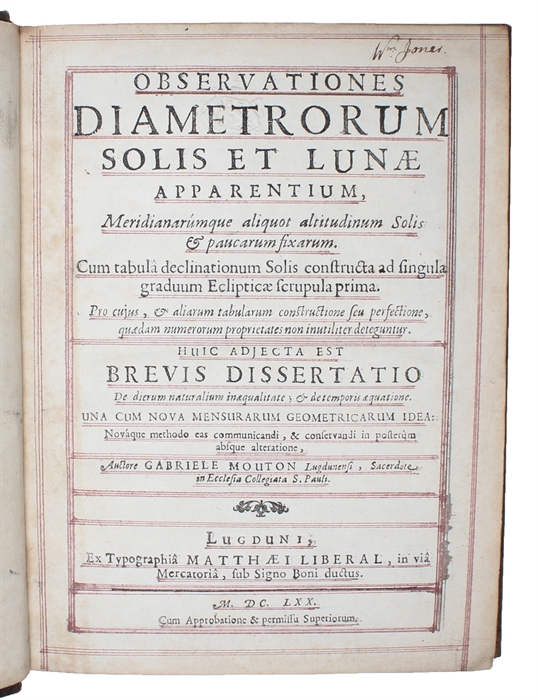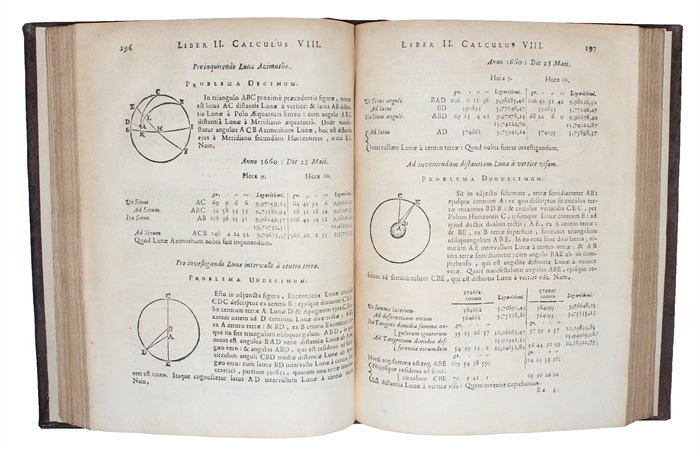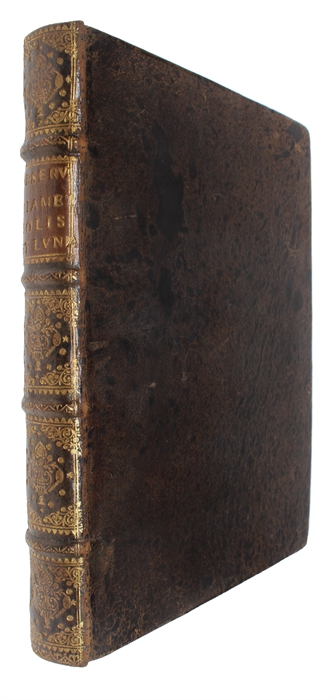A PIONEER WORK ON UNITS OF MEASUREMENT ETC.
MOUTON, GABRIEL.
Observationes diametrorum Solis et Lunae apparentium, meridianarumque aliqvot altitudinum Solis & paucarum fixarum. Cum tabula declinationum Solis constructa ad singula graduum Eclipticae scrupula prima.... Huic adjecta est brevis Dissertatio De dierum naturalium.... una cum nova mensurarum geometricarum Idea: Nováque methodo...
Lugduni (Lyon), Matthaei Liberal, 1670.
4to. Contemp. full calf. Raised bands, profusely gilt spine. Titlelabel with gilt lettering. Engraved portrait. (10),448 pp., woodcuts and numerous textdiagrams. One leaf with a repaired tear, no loss. Marginal browning to the last few leaves. Contemp. underlinings in red on title-page. Half-title, title-page and portrait with the small blindtooled stamp from the Macclesfield Library. In top of title-page with previous owners name William Jones (English mathematician 1675-1749). A fine copy.
Very rare first edition of the book that made Mouton famous. This work is important in many respects. In the words of Lalande: "This volume contains interesting memoirs on interpolations and on the project of a universal standard of measurement based on the pendulum." - It contains the first suggestion of an international unit of length based upon the meridian, and Mouton "was a pioneer in research on natural and practicable units of measurement. He had been struck by the difficulties and disagreements resulting from the great number of units of length, for example, which varied from province to province and from country to country. First he studied how the length of a pendulum with a frequency of one beat per second varies with latitude. He then proposed to deduce from these variations the length of the terrestrial meridian, a fraction of which was to be taken as the universal unit of length. Mouton selected the minute of the degree, which he called the mille. The divisions and subdivisions of this principal unit, all in decimal fractions, were called centuria, decuria, virga, virgula, decima, centesima, and millesima - or alternatively, in the same order, stadium, funiculus, virga, virgula, digitus, granum, and punctum."(DSB). - Second, the work is of mathematical importance, for it contains the discovery of a method of the summation of series of numbers by their differences. This was also discovered by Leibniz, who did not know Mouton's. This fact formed the subject of an unworthy suggestion in newton's Commercium Epistolicum that it had been Leibnitz' first theft.
Honeyman 2259. - Norman 1560. - PMM 260 (note).
Mouton became vicaire perpétuel of St. Paul's Church in Lyons in 1646, after taking holy orders and obtaining a doctorate in theology. He spent his whole life in his native city, fulfilling his clerical responsibilities and untroubled by any extraordinary events. During his leisure time he studied mathematics and astronomy and rapidly acquired a certain renown in the city. Jean Picard, who also was an abbé, held Mouton in high esteem and always visited him when in Lyons to work on the determination of the city's geographic position.
Order-nr.: 51676




